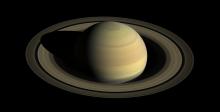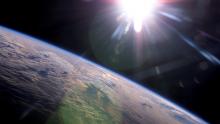Listen to today's episode of StarDate on the web the same day it airs in high-quality streaming audio without any extra ads or announcements. Choose a $8 one-month pass, or listen every day for a year for just $30.
You are here
Winter Solstice
The Sun is making itself scarce as seen from the northern hemisphere right now. That’s because tomorrow night marks the winter solstice, so the next couple of days are the shortest of the year — the days with the shortest interval between sunrise and sunset.
Astronomically, the solstice marks the beginning of winter. The Sun stands farthest south in the sky, so the southern hemisphere receives most of the Sun’s energy, leaving the north dark and cold.
Perhaps a bit surprisingly, though, the solstice isn’t the coldest time of year. If you look at the average temperatures here in the United States, you’ll find that the weather is coldest anywhere from a few days to a couple of months after the solstice. The lag tends to be greater from northern latitudes than southern ones.
The effect is called the seasonal lag. And there are a couple of reasons for it. For one thing, the Sun stays low in the south for a good while after the solstice, so its rays come in at a low angle. That’s the least efficient angle for heating things up — they get warmer much faster when the Sun is higher in the sky.
The most important reason for the lag, though, is that it takes the land and oceans a long time to begin warming up — especially the oceans. It’s not until well after the solstice that they absorb enough energy to start warming up — and to start heating the air as well — building toward their peak well after the summer solstice in June.
Script by Damond Benningfield





